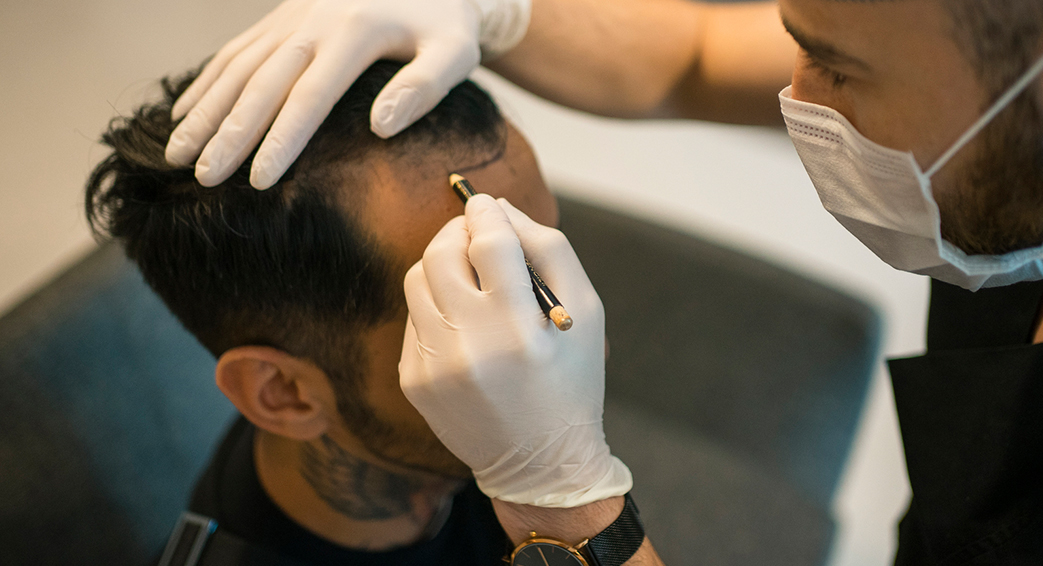In recent years, the global market for hair transplant surgery has seen significant growth, with more patients traveling abroad to seek more affordable cosmetic procedures. This trend has particularly increased the number of individuals undergoing hair transplants in popular medical tourism destinations such as Turkey and other countries in the Middle East and Asia. While the allure of reduced costs and packaged deals is compelling, an emerging and concerning phenomenon has surfaced: extreme postoperative edema (swelling) in patients who undergo hair transplant surgery abroad.
Understanding Post-Operative Edema in Hair Transplant Surgery
Post-operative edema, or swelling, is a common side effect in hair transplant surgery, typically resulting from fluid accumulation and inflammation as part of the body’s natural response to trauma. In most cases, swelling is localized and subsides within a few days when managed correctly. However, an increasing number of patients traveling for hair restoration procedures have reported experiencing extreme and prolonged head and facial edema post-surgery. This severe swelling is often exacerbated by several factors prevalent in high-volume, low-cost clinics, including overharvesting of grafts, improper use of tumescence, and inadequate post-operative care.
Factors Contributing to Severe Edema in the Medical Tourism Market
- Excessive Use of Tumescence: Tumescence involves the injection of large amounts of fluid into the scalp to lift the tissue and create a safer space for graft placement. While a necessary step, improper or excessive use can lead to extreme post-surgical swelling, especially when large areas are transplanted in a single session. Some clinics may utilize higher volumes of fluid to expedite the extraction or implantation process, which can cause excessive head and facial edema.
- High Graft Counts Per Session: Many medical tourism clinics advertise “mega-sessions” or even “giga-sessions” where thousands of grafts are transplanted in one procedure. High graft counts may create additional trauma to the scalp, thereby increasing the likelihood of severe post-operative edema and putting the newly implanted grafts at risk.
- Improper Donor Area Management: In high-volume hair transplant clinics, where time and cost constraints often take precedence, the donor area is sometimes overharvested, leading to additional tissue damage and an increased inflammatory response, contributing to prolonged swelling.
- Insufficient Post-Operative Care: Unlike established clinics in countries with stringent medical guidelines, some facilities in the medical tourism market may not provide comprehensive post-operative care instructions or follow-up. This lack of oversight can result in unaddressed complications, including severe swelling that could otherwise be mitigated with timely intervention.
Impact of Severe Edema on Graft Survival and Long-Term Results
Severe post-operative edema is not merely a cosmetic concern; it can significantly impact the outcome of the hair transplant procedure. Extreme swelling, particularly in cases where fluid accumulates beyond the immediate surgical area and extends into the face and forehead, can have the following detrimental effects:
- Compromised Graft Survival: Prolonged or extreme edema exerts pressure on the newly implanted grafts, leading to an increased risk of compression, shifting, or even displacement of the grafts. This mechanical pressure can reduce blood flow to the fragile follicles during the critical post-transplant period, potentially compromising graft survival rates.
- Altered Growth Patterns: When grafts are subjected to excessive movement or pressure during the healing process, the direction and angle of hair growth may be affected. This can result in an unnatural appearance or require additional corrective procedures.
- Potential Skin Necrosis: Severe edema, if left untreated, may compromise the blood supply to certain areas of the scalp. This can result in localized skin necrosis, which not only destroys the skin but also jeopardizes the survival of the surrounding grafts.
- Scarring and Donor Area Complications: Extreme swelling in the donor area can increase tension on the donor wound, leading to widened scars or additional trauma to adjacent hair follicles. In severe cases, this can cause visible scarring or permanent hair loss in the donor region.
Prevention and Proper Management of Severe Post-Operative Edema
To reduce the risk of severe edema and its associated complications, it is crucial for patients to consider the following when evaluating their options for hair transplant surgery:
- Research the Surgical Team’s Expertise: Patients should seek out clinics with experienced surgeons who follow best practices in fluid management and graft extraction to minimize unnecessary trauma.
- Avoid Clinics Offering “Mega-Sessions”: While large sessions may seem cost-effective, they often result in higher tissue trauma and increased postoperative complications, including severe edema. Opting for smaller sessions may reduce the risk of adverse outcomes.
- Follow Post-Operative Protocols Diligently: Proper postoperative care is vital in managing edema. Patients should follow prescribed medication regimens, avoid excessive physical activity, and communicate with their surgical team if swelling becomes severe or prolonged.
- Seek Facilities with Stringent Medical Standards: Choosing a clinic that adheres to internationally recognized standards of patient care and safety is essential, even if the cost is higher. Facilities that prioritize patient safety over volume are less likely to cut corners, reducing the likelihood of complications like severe edema.
The increasing trend of extreme post-operative edema in the cosmetic surgery tourism market highlights a significant concern that both patients and providers need to address. Severe swelling not only jeopardizes the survival and appearance of transplanted grafts but can also lead to a range of complications that may compromise the long-term success of the procedure. Patients considering hair transplant surgery abroad must be diligent in selecting a reputable provider and be aware of the potential risks involved in high-volume, low-cost clinics. With the right precautions and awareness, many of these issues can be avoided, ensuring a safer and more predictable outcome for individuals seeking hair restoration solutions. For more information on hair transplant surgery, visit the American Hair Loss Association Hair Transplant Surgery section. https://www.americanhairloss.org/hair-transplant-surgery/
